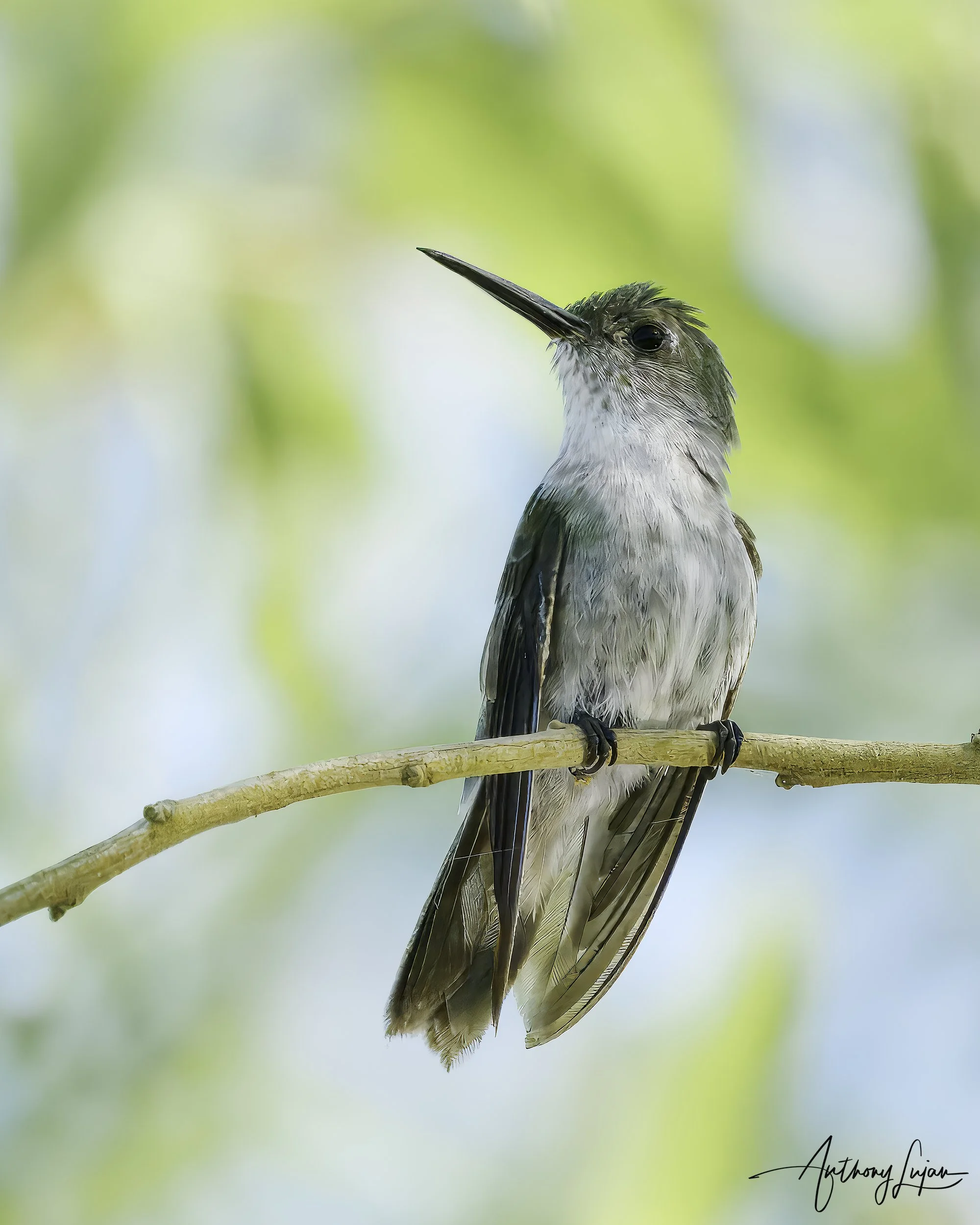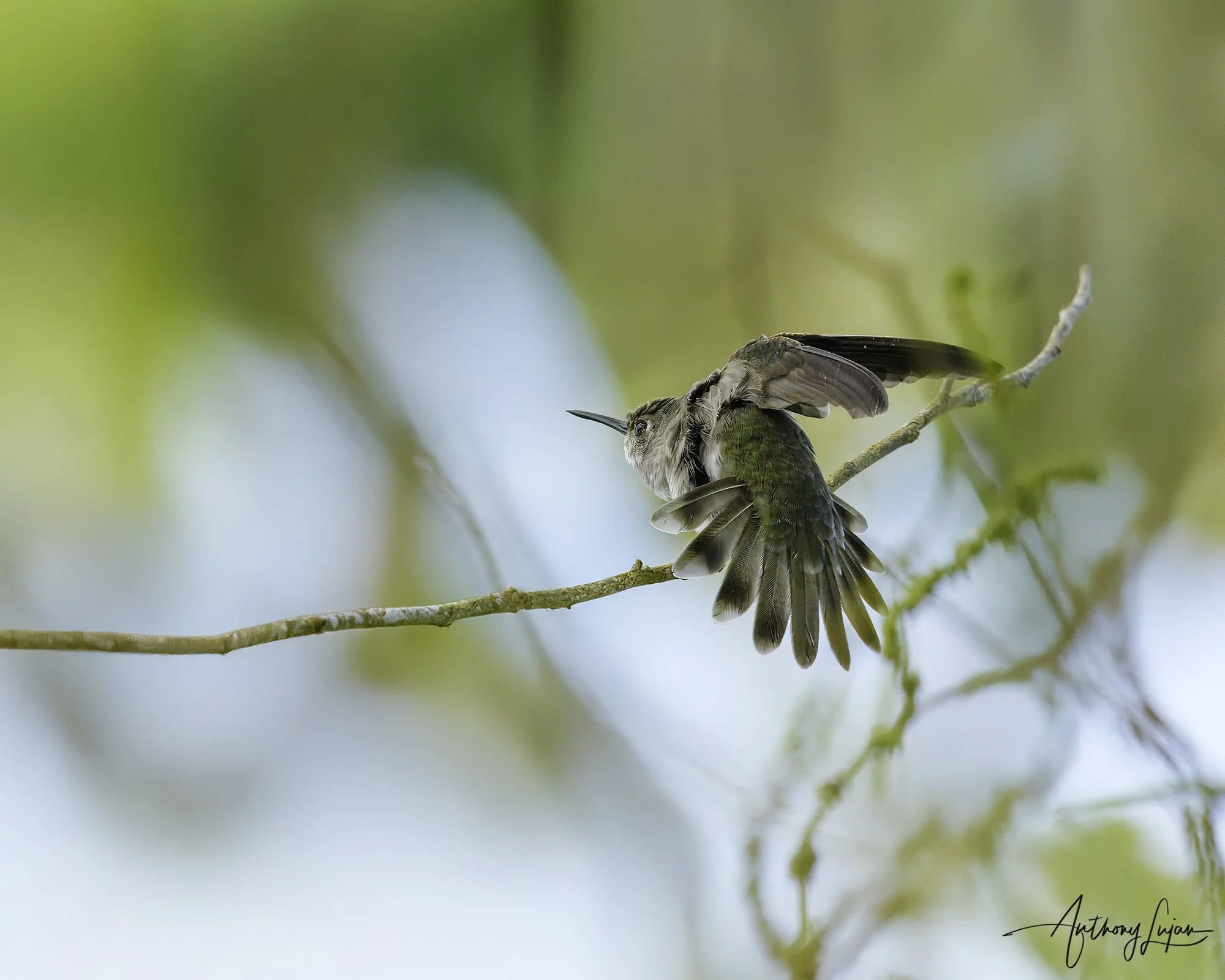Olive-spotted Hummingbird
Olive-spotted Hummingbird (Talaphorus chlorocercus)
Name Origin:
The genus Talaphorus is derived from Greek talas meaning “wretched” or “poor” and phoros meaning “bearing” or “carrying.” The species epithet chlorocercus comes from Greek chloros meaning “green” and kerkos meaning “tail,” referring to the bird’s green tail.
Quick Facts
🪶 Length: ~9–10 cm
⚖️ Weight: ~3.5–4.5 g
🌎 Range: Lowland western Amazon Basin (eastern Peru, western Brazil, and northern Bolivia)
🧭 Elevation: Mostly below 400 m
🌸 Diet: Nectar and small insects
🏡 Habitat: River-edge forest, river islands, early successional floodplain vegetation
🧬 Clade: Trochilini (a.k.a. “emeralds”)
📊 Status: Least Concern (IUCN 2024)
Subspecies & Distribution
Monotypic — no subspecies recognized.
Species Overview
The Olive-spotted Hummingbird is a specialist of riverine and successional habitats in the western Amazon Basin. It is often found in early growth on river islands, oxbow lake edges, and other seasonally disturbed lowland habitats. The plumage is subdued: dull greenish above, pale below with faint spotting on the sides of the breast, and a greenish tail. Though not brightly colored, its habitat preference and behavior set it apart from other sympatric hummingbirds.
Male Description:
Olive to bronze-green upperparts, pale gray underparts with olive spots on flanks and breast sides, green tail, and a straight black bill. Throat and chest typically lack iridescence.
Female Description:
Very similar to male, with slightly more muted spotting and a narrower tail. Sexes appear nearly identical in the field.
Habitat & Behavior:
Most often seen along the edges of whitewater rivers, oxbow lakes, and on recently formed river islands. Prefers pioneer vegetation such as Cecropia, Heliconia, and Inga. Uses a traplining strategy to forage on scattered flowers. Not territorial and typically solitary. Because of its preference for ephemeral and regenerating habitats, it can be locally common in the right zones but generally overlooked elsewhere.
Conservation Note:
Although its specialized habitat may seem vulnerable, the Olive-spotted Hummingbird is considered Least Concern. Its range is broad and it benefits from naturally dynamic habitats created by seasonal flooding. It is, however, sensitive to major river engineering and permanent development of floodplains.





Checkout Anthony’s playlist of this species! Click the top right dropdown to see all the videos.

